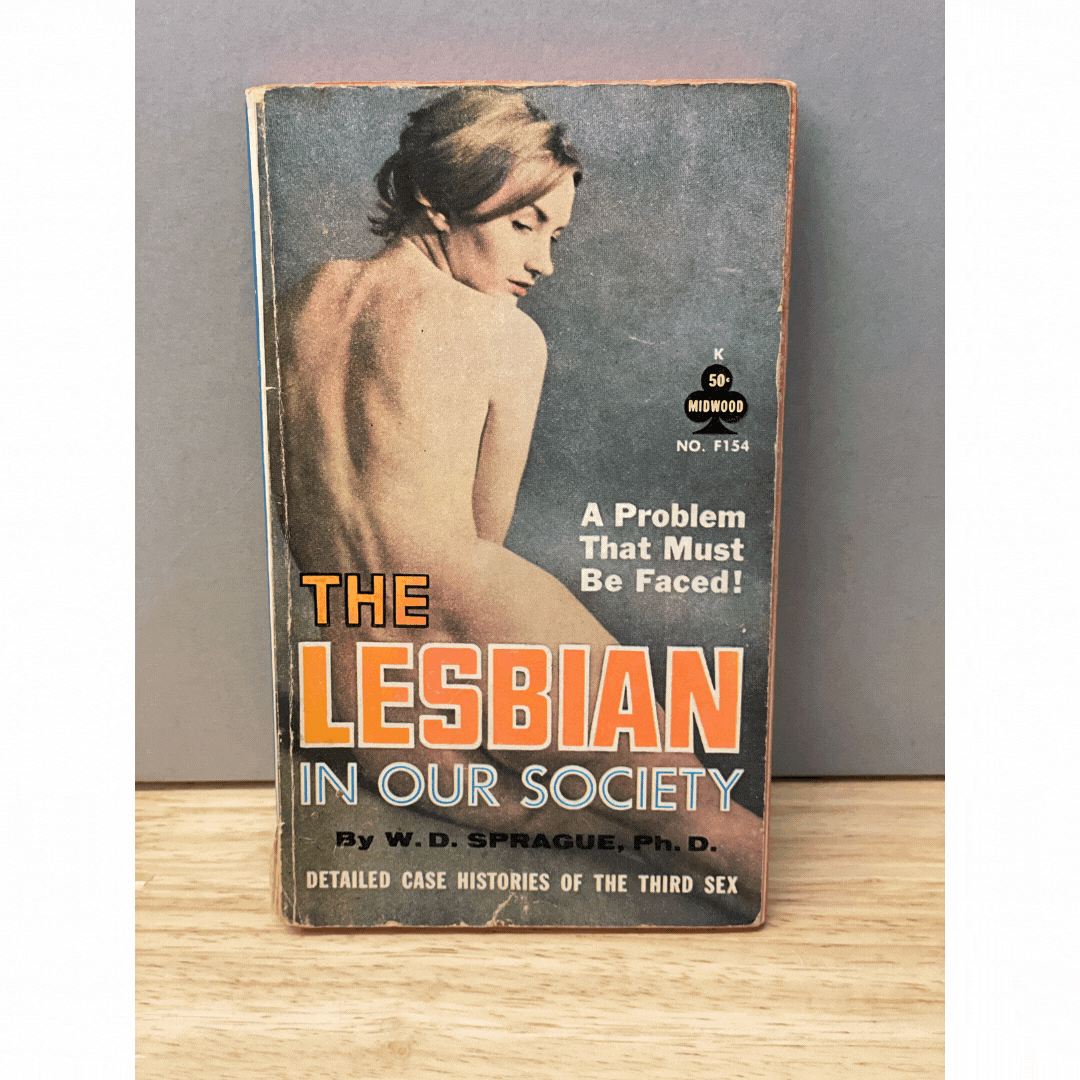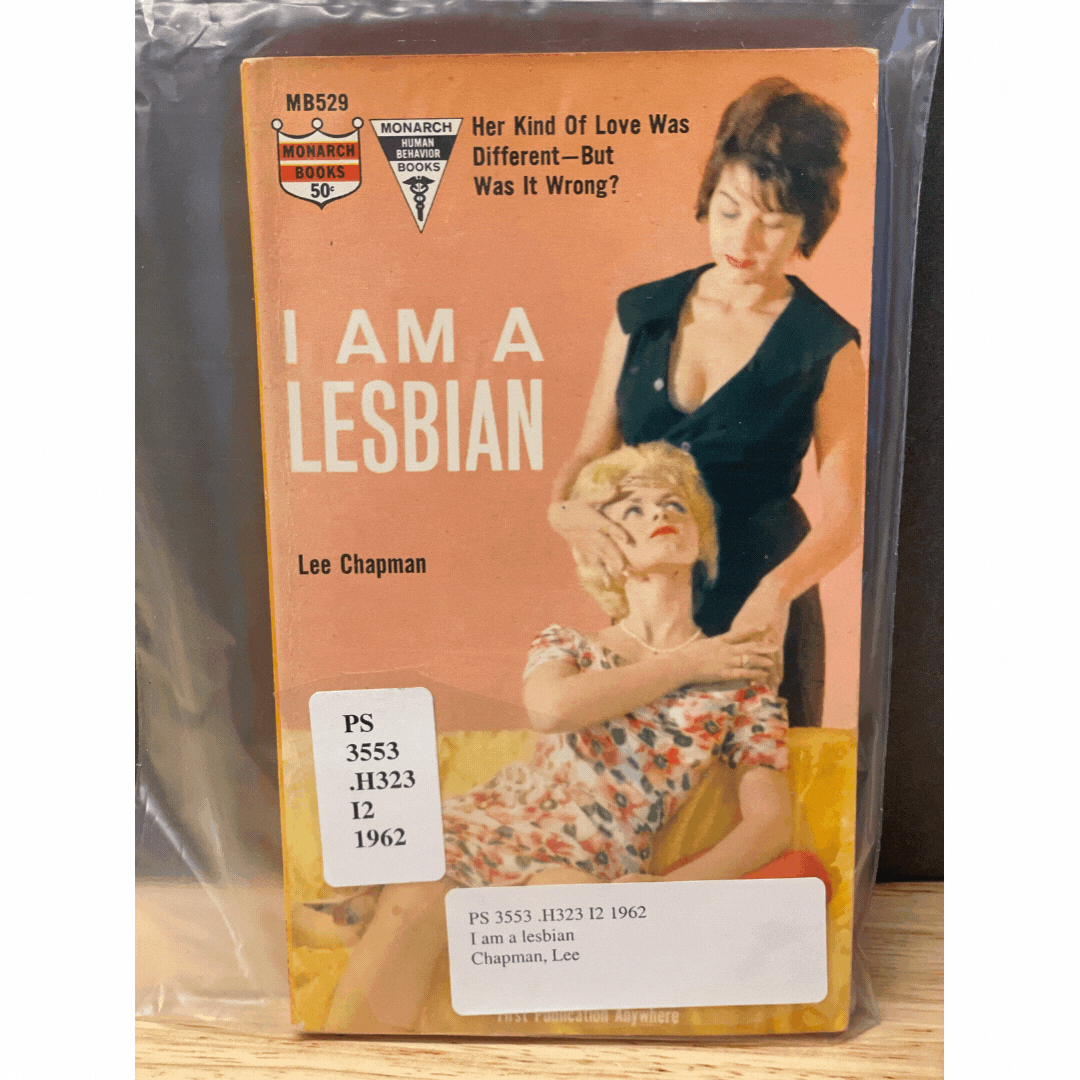Mazer Archives March 2022 Newsletter | Out of the Archives: Our Lesbian Pulp Novels
Archivists spend a lot of time thinking about paper. The history of paper is long and meandering, with humans using whatever was environmentally available or easily traded to make the paper. From papyrus to parchment, cotton, and even wild fig tree bark in Mexico, paper was time consuming to make and could be expensive. It wasn’t until the 20th century that humans began using wood pulp to make paper; an innovation that made books more accessible to anyone. Book production exploded and niche markets began to appear.
This included a market for fiction for lesbians, who were starved for representation. These books also satisfied straight audiences curious about the LGBTQ+ world. Suddenly, lesbian pulp fiction novels were available everywhere, despite an absence of a mass lesbian and gay movement, queer theory, women’s bookstores, and before the explosion of lesbian periodical publication.
These paperbacks are instantly recognizable by their covers, which feature art clearly meant to cater to the straight men who made up a majority of the audience. We look back now and laugh at the ridiculous poses and the lack of butch representation, but at the time, the books were an opportunity for lesbians to connect with a part of themselves that was confined to secrecy. A book could even be carried in the open as a discrete signal to other women who loved women.
In the mid 1950s, March Hastings wrote a book about women in prison. She was surprised when the editor, after reading it, asked her to “do a gay book for us first?” In 1989, at a round table event held by the San Francisco Bay Area Gay and Lesbian Historical Society, March talked about this moment, remarking:
“I felt the wand of Oz touch my shoulder and I wrote the book in a single marathon burst of production. Nothing ‘editorial’ mattered. No audience mattered. Only the pages, the experience of writing it—on a manual, portable Royal [typewriter], in a cold-water flat, in a hundred-year old building called ‘the Barracks,’ which it had been. Every other week this ancient brick monster, the size of a city block in New York, caught fire. I lived on the top floor, fortunately. It seems to me I was forever racing up the fire escape with my manuscript in a little cardboard valise, the only thing I cared about saving, along with its author, sprinting away over the rooftops to safety at 4am, in icy moonlight and snow.”
That manuscript was Three Women, published in 1958. Three Women, like nearly all of the lesbian fiction at this time, fell victim to the requirements set forth by society, the postal service, and publishers demanding that the stories have unhappy endings. Its a trope lesbians in pop culture still struggle with to this day.
However, despite the unhappy endings, the lesbian representation was new and exciting for women of this era, where themes were explored that were often excluded from dedicated lesbian publications, such as The Ladder, which adhered to the Daughter of Bilitis’ goal to depict lesbians as “just like every one else,” even going so far as refusing to publish photos of women wearing pants on their covers.
Books made of wood pulp are notoriously hard to preserve. The wood makes the book brittle and the pages yellow as it ages. A material that made books more accessible unfortunately will also one day lead to their disappearance as the books fall apart and age. However, we love these books and want them to be available for generations to come. To preserve them, we keep them in special bags to protect them from dust and pests and store them in boxes with a high pH to help with acidic off gassing.
March Hastings ran into a burning building to save her manuscript. Seeing herself represented in fiction was vital enough to risk life and limb. That’s a legacy we’d like to live forever.






